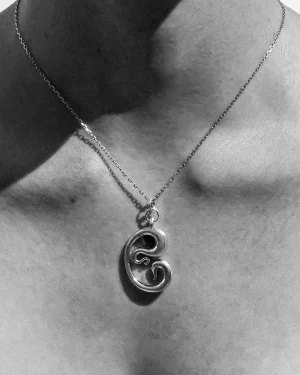
The Evolution of Jewelry Making as Wearable Art and Personal Expression
Jewelry making has almost never been solely about superficial beauty and adornment. Throughout history, it has served as a profound expression of cultural identity, spiritual beliefs, and personal status. In ancient civilizations, jewelry held significance beyond its monetary value; it was deeply embedded in rituals, ceremonies, and daily life, symbolizing protection and social standing. This tradition continues today, as jewelry remains one of people’s most prized possessions, often holding significant sentimental value regardless of its material worth.
Modern jewelry making continues to evolve by blending these longstanding techniques with contemporary, cutting-edge innovations, enabling individuals to articulate their unique stories and identities through wearable art. From shells, stones, and bones in prehistoric times to today’s intricate designs, jewelry remains a universal yet incredibly diverse form of adornment and expression and a testament to human creativity, resourcefulness, and cultural heritage.






Ancient Beginnings: A Historical Overview
The history of jewelry making dates back thousands of years, with some of the earliest examples found in archaeological excavations from ancient civilizations.
Ancient Egypt
In ancient Egypt, jewelry was not only a display of wealth and power but also a crucial element of spiritual practices. Pharaohs and nobles were often buried with their most prized pieces, believed to accompany them to the afterlife and protect their souls. These artifacts, made from gold and adorned with precious stones like lapis lazuli and turquoise, symbolized eternal life and divine protection.


Egypt, 1550-1425 B.C. © The Met


Egypt, 1504-1450 B.C. © The Met
Classical Antiquity
Similarly, in ancient Greece and Rome, jewelry played a significant role in both public and private life. Goldsmiths and silversmiths created exquisite pieces inspired by mythology and nature, which were worn during important events and religious ceremonies. The craftsmanship involved in techniques such as repoussé and gemstone carving reflected the high value placed on jewelry as both an art form and a spiritual token.


Greek, 5th-4th BC© The Met


Roman, 2nd century CE © The Met


Rome, 3rd century CE © The Met
Indigenous Roots
Indigenous jewelry design is a vital aspect of cultural identity and heritage for many Native American tribes and other indigenous communities worldwide. Crafted from materials like turquoise, shell, bone, wood, and metals, these pieces are rich in symbolism and traditional craftsmanship. For example, the Navajo, Hopi, and Zuni tribes in the American Southwest are renowned for their intricate silverwork and turquoise inlay. Indigenous jewelry is wearable art that honors ancestral knowledge, spiritual beliefs, and a deep respect for nature. Today, indigenous artisans continue to innovate while preserving traditional techniques, ensuring their artistic heritage endures and evolves.


Ilongot People, late 19 c. © The Met


Indigenous Costa Rican, 500 BCE-900 © The Met


Indigenous American, 2300 BCE-1492 © The Met
Victorian Mourning Customs
In Victorian England, mourning jewelry became an essential part of bereavement customs, reflecting the era’s intricate social and cultural practices surrounding death. Following the death of Prince Albert in 1861, Queen Victoria popularized the wearing of mourning jewelry, often crafted from jet, onyx, and vulcanite. These pieces were typically black and adorned with motifs such as skulls, crosses, and weeping willows, symbolizing grief and remembrance. Lockets and brooches containing hair or portraits of the deceased were also common, serving as intimate keepsakes to honor lost loved ones. Victorian mourning jewelry was not merely decorative; it was a deeply personal expression of loss and a means to keep the memory of the departed close.


England, 1875 © The V&A




England, late 18 c. © The V&A
Evolution of Jewelry Making Techniques and Materials Across History
Jewelry making began with the use of rudimentary, raw materials such as stones, bones, and shells. These early materials were fashioned into beads, pendants, and amulets, serving both decorative and symbolic purposes. As societies progressed, particularly with the discovery of metalworking, jewelry craftsmanship evolved dramatically. Techniques for working metals like gold, silver, and bronze emerged, enabling artisans to create more durable and intricate pieces. Ancient civilizations such as the Egyptians, Greeks, and Romans pioneered methods like casting, soldering, and gemstone setting, which laid the foundation for sophisticated jewelry making.
Across continents and centuries, techniques continued to evolve, influenced by cultural exchanges and technological advancements. The Middle Ages saw the rise of elaborate filigree and enameling techniques, while the Renaissance brought a revival of classical motifs and exacting craftsmanship. Expanding global trade made gemstones increasingly accessible, while advances in cutting techniques enhanced their sparkle, especially in candlelight. Fast forward to the modern era, and jewelry making has embraced cutting-edge technologies like CAD (Computer-Aided Design) and 3D printing, allowing for precise customization and innovation. Today’s jewelry designers blend centuries-old techniques with contemporary materials and processes, ensuring that jewelry remains not only a reflection of personal style but also a celebration of human history and craftsmanship.
Traditional Techniques
- Filigree and Granulation: Delicate metalwork techniques involving tiny beads and threads of metal to create intricate patterns.
- Cloisonné and Enameling: Using powdered glass fused to metal to add vibrant colors and designs.
- Stone Cutting and Setting: Techniques for cutting and securing gemstones into jewelry settings, including bezel, prong, and pavé settings.


Kerala, 1853 © The V&A




Contemporary Innovations
- CAD (Computer-Aided Design): Utilizing technology to create detailed designs and prototypes before crafting the final piece.
- Alternative Materials: Exploring materials such as acrylic, resin, and recycled metals to create sustainable and innovative designs.
- Mixed Media: Incorporating non-traditional elements like textiles, wood, or ceramics into jewelry designs for a unique aesthetic.
- 3D Printing: Revolutionizing jewelry production by allowing for intricate designs and customization.
- Smart Jewelry: Integrating technology such as sensors and connectivity into jewelry pieces, merging fashion with functionality.
The Future of Jewelry Making: Innovation and Beyond
As technology continues to evolve and cultural perspectives shift, the future of jewelry making holds exciting possibilities. Innovations in materials, techniques, and design philosophies pave the way for new generations of artisans and collectors. Eco-friendly jewelry has become increasingly popular as consumers seek sustainable and ethical options. One notable brand is Pippa Small, a designer known for her commitment to fair-trade practices. She collaborates with local artisans worldwide to create stunning pieces using fair-trade gold and ethically sourced gemstones, such as handcrafted gold rings and necklaces made through the Turquoise Mountain Foundation. Similarly, Catbird, a Brooklyn-based brand, prioritizes sustainability by using recycled gold and conflict-free diamonds in their minimalist designs.






On the technology front, smart jewelry has emerged, blending functionality with style. The Oura Ring is a prime example, offering advanced sensors that track sleep, activity, and readiness metrics. Made from titanium and available in various finishes, this ring provides comprehensive health insights through features like heart rate monitoring and body temperature sensing. The Bellabeat Leaf caters specifically to women, functioning as a necklace, bracelet, or clip, trackings activity, sleep, stress, and reproductive health. The Misfit Swarovski Shine collaboration blends fitness tracking technology with Swarovski crystals, offering versatile wear as a bracelet or necklace while tracking activity and sleep.






Final Reflections
Jewelry making, an ancient art steeped in tradition, endures as a timeless avenue for human expression and cultural legacy. From the symbolic adornments cherished by ancient civilizations to the avant-garde and technologically innovative creations of today, jewelry has consistently served as a medium through which we articulate our beliefs, identities, and aspirations. Spanning civilizations, it encapsulates an innate human inclination for symbolism, identification, and self-expression.
As we look to the future, jewelry continues to evolve, embracing sustainable practices and cutting-edge technologies without losing sight of its fundamental role in our lives, celebrating heritage and reflecting the diverse spectrum of human expression through wearable art.

 Afra – BraceletBy Studio Delta P€344 incl. tax€344 incl. tax
Afra – BraceletBy Studio Delta P€344 incl. tax€344 incl. tax
 111 RingBy LAÔMA ATELIER€187 incl. tax€187 incl. tax
111 RingBy LAÔMA ATELIER€187 incl. tax€187 incl. tax
 Tiny Heads — Silver PendantBy Lucas Gutierrez Studio€300 incl. tax€300 incl. tax
Tiny Heads — Silver PendantBy Lucas Gutierrez Studio€300 incl. tax€300 incl. tax
 Oak – Thumb Ring – SilverBy Studio Delta P€213 incl. tax€213 incl. tax
Oak – Thumb Ring – SilverBy Studio Delta P€213 incl. tax€213 incl. tax
 Cypress – Ring – SilverBy Studio Delta P€213 incl. tax€213 incl. tax
Cypress – Ring – SilverBy Studio Delta P€213 incl. tax€213 incl. tax
 Opia – Gold NecklaceBy Delphine Severs€305€305
Opia – Gold NecklaceBy Delphine Severs€305€305
 Chrysalism – Gold NecklaceBy Delphine Severs€305€305
Chrysalism – Gold NecklaceBy Delphine Severs€305€305
 Chrysalism – Gold NecklaceBy Delphine Severs€305€305
Chrysalism – Gold NecklaceBy Delphine Severs€305€305
 Na Linii – Silver Bracelet With PearlBy SVITANOK€625 incl. tax€625 incl. tax
Na Linii – Silver Bracelet With PearlBy SVITANOK€625 incl. tax€625 incl. tax





